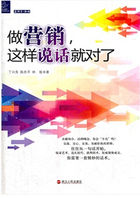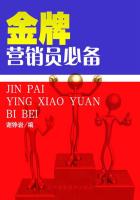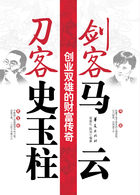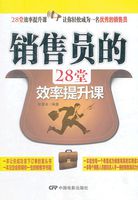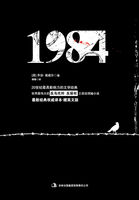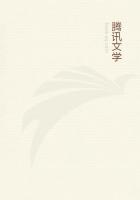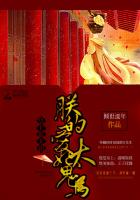[1]〔美〕纳雷希·K·马尔霍特拉著,涂平等译.市场营销研究:应用导向.北京:电子工业出版社,2002年10月第1版,2003年9月第3次印刷.
[2]〔美〕艾尔·巴比著,邱泽奇译.社会研究方法基础(第八版).北京:华夏出版社,2002.
[3]〔美〕彼德·F·德鲁克等著.知识管理.北京:中国人民大学出版社,1999.
[4]〔美〕弗洛德·J·福勒著,孙振东,龙藜,陈荟译.调查研究方法(第3版).重庆:重庆大学出版社,2004.
[5]陈国权,李赞斌.学习型组织中的“学习主体”类型与案例研究.管理科学学报,2002(4):51-67.
[6]陈国权,马萌.组织学习的测评方法及在30家民营企业的应用研究.管理工程学报,2002(1):25-29.
[7]陈国权,马萌.组织学习的模型、案例与实施方法研究.中国管理科学,2001(4):65-74.
[8]陈国权,马萌.组织学习过程模型研究.管理科学学报,2000a(3):15-23.
[9]陈国权,马萌.组织学习——现状与展望.中国管理科学,2000b(1):66-74.
[10]陈国权,郑红平.组织学习影响因素、学习能力与绩效关系的实证研究.管理科学学报,2005(2):48-61.
[11]程德俊,赵曙明.高参与工作系统与企业绩效:人力资本专用性和环境动态性的影响.管理世界,2006(3):86-93.
[12]范秀成,英格玛·比约克曼.外商投资企业人力资源管理与绩效关系研究.管理科学学报,2003(2):54-60.
[13]风笑天.社会研究方法.北京:高等教育出版社,2006.
[14]贺小刚.企业家能力、组织能力与企业绩效.上海:上海财经大学出版社,2006.
[15]侯杰泰,温忠麟,成子娟.结构方程模型及其应用.北京:教育科学出版社,2004,2005.
[16]黄江圳,谭力文.从能力到动态能力:企业战略观的转变.经济管理,2002(22):13-17.
[17]蒋春燕,赵曙明.企业特征、人力资源管理与绩效:香港企业的实证研究.管理评论,2004(10):22-31.
[18]蒋春燕,赵曙明.人力资源管理实践与组织绩效的相关分析.经济管理.新管理,2005(4):72-79.
[19]蒋永康,李光久.不同所有制企业绩效比较实证分析及其对策建议.数理统计与管理,2006(1):61-67.
[20]李怀祖.管理研究方法论(第2版).西安:西安交通大学出版社,2004年1月第2版,2004.
[21]李乾文.公司创业导向与组织绩效间的转化路径研究:[博士学位论文].天津:南开大学,2006.
[22]李新建.企业薪酬管理.天津:南开大学出版社,2003.
[23]李新建,孟繁强,张立富.企业薪酬管理概论.北京:中国人民大学出版社,2006.
[24]李佑颐,赵曙明,刘洪.人力资源管理研究述评.南京大学学报(哲学·人文科学·社会科学),2001(4):128-139.
[25]李正卫.动态环境条件下的组织学习与企业绩效:[博士学位论文].杭州:浙江大学,2003.
[26]林嵩,姜彦福.结构方程模型理论及其在管理研究中的应用.科学学与科学技术管理,2006(2):38-41.
[27]刘善仕,周巧笑,晁罡.高绩效工作系统与组织绩效:中国连锁行业的实证研究.中国管理科学,2005(1):141-148.
[28]陆昌勤,方俐洛,凌文辁.“组织学习”研究的历史、现状与进展.中国软科学,2001(12):115-118.
[29]罗海成.基于心理契约的服务忠诚决定因素整合研究:[博士学位论文].天津:南开大学,2005.
[30]罗慧,万迪昉,赵海峰.网络环境下组织学习测度的实证研究.系统工程理论与实践,2004(7):46-52.
[31]毛晓梅,张旭东.中国企业组织学习能力亟待提升.http://www.xinhuanet.com,2006年4月8日.
[32]彭说龙,谢洪明,陈春辉.环境变动组织学习与组织绩效的关系研究.科学学与科学技术管理,2005(11):106-110.
[33]邱皓政.结构方程模式:LISREL的理论、技术与应用.台北:双叶书廊有限公司,2005.
[34]荣泰生.企业研究方法.北京:中国税务出版社,2005.
[35]史江涛,杨金风.结构方程建模方法(SEM)在我国管理学研究中的应用现状分析.经济管理·新管理,2006(2):24-30.
[36]王国顺等.企业理论:能力理论.北京:中国经济出版社,2006.
[37]王颖,李树茁.人力资源管理实践与企业绩效关系研究评述.科学学研究,2002(6):640-645.
[38]王永贵.战略柔性与企业高成长.天津:南开大学出版社,2003.
[39]王永龙.当代西方的战略人力资源管理.经济管理,2003(4):50-54.
[40]魏立群,刘忠明.中国企业发展战略性人力资源管理的实证研究.科学学研究,2005(6):816-819.
[41]吴风来.产权所有制性质与企业绩效实证研究.经济科学,2003(3):12-19.
[42]吴红梅.国外人力资源管理研究回顾与展望.外国经济与管理,2004(2):17-21.
[43]吴价宝.组织学习能力测度.中国管理科学,2003(8):73-78.
[44]吴金希.用知识赢得优势.北京:知识产权出版社,2005.
[45]吴明隆.SPSS统计应用实务:问卷分析与应用统计.北京:科学出版社,2003.
[46]谢洪明,韩子天.组织学习与绩效的关系:创新是中介变量吗?——珠三角地区企业的实证研究及其启示.科研管理,2005(5):1-10.
[47]谢洪明,刘常勇,陈春辉.市场导向与组织绩效的关系:组织学习与创新的影响——珠三角地区企业的实证研究.管理世界,2006(2):80-94,143.
[48]谢洪明,吴隆增,王成等.组织学习的前因后果:一个新的理论框架.科学学与科学技术管理,2006(8):161-168.
[49]谢洪明.市场导向、组织学习与组织绩效的关系研究.科学学研究,2005(4):517-524.
[50]谢礼珊,汪纯孝.服务性企业员工心理受权与工作绩效实证研究.北京:旅游教育出版社,2004.
[51]徐国华,杨东涛.一个整合人力资源实践与柔性战略的研究框架.江苏社会科学,2004(6):134-138.
[52]徐国华,杨东涛.制造企业的支持性人力资源实践、柔性战略与公司绩效.管理世界,2005(5):111-116,169.
[53]颜士梅.国外战略人力资源管理研究综述.外国经济与管理,2003(9):29-33.
[54]杨东涛,刘杰.最佳人力资源管理实践的研究.江苏社会科学,2005(6):106-110.
[55]杨艳,吴贵生.组织记忆文献综述:概念、分类和结构.科学学与科学技术管理,2006(4):144-148.
[56]杨智,刘新燕,万后芬.国外组织学习研究综述.外国经济与管理,2004(12):15-20.
[57]姚俊,吕源,蓝海林.组织学习与演化的综合模型分析.管理评论,2006(1):45-50.
[58]于海波,方俐洛,凌文辁.组织学习整合理论模型.心理科学进展,2004(2):246-255.
[59]余光胜.一种全新的企业理论(上)——企业知识理论.外国经济与管理,2000a(2):8-10.
[60]余光胜.一种全新的企业理论(下)——企业知识理论.外国经济与管理,2000b(3):10-13,21
[61]余光胜.企业竞争优势根源的理论演进.外国经济与管理,2002(10):2-7.
[62]袁方,王汉生.社会研究方法教程.北京:北京大学出版社,1997年2月第1版,2004.
[63]张文彤.SPSS11统计分析教程(高级篇).北京:北京希望电子出版社,2002b.
[64]张文彤.SPSS11统计分析教程(基础篇).北京:北京希望电子出版社,2002a.
[65]张一弛,黄涛,李琦.高绩效工作体系人力资源管理措施的结构整合与内涵回归.经济科学,2004(3):63-73.
[66]张原康.组织学习与创新绩效关系——以高科技产业为例:[博士学位论文].天津:南开大学,2005.
[67]张正堂.人力资源管理活动与企业绩效的关系:人力资源管理效能中介效应的实证研究.经济科学,2006(2):43-53.
[68]赵海峰,程洁,万迪昉.组织学习测度的研究述评.经济理论与经济管理,2003(3):69-72.
[69]赵曙明.新经济时代的人力资源管理.南京大学学报(哲学·人文科学·社会科学),2002(3):34-42.
[70]赵英才.学位论文创作.北京:机械工业出版社,2004.
[71]赵曙明,冯芷艳,刘洪主编.人力资源管理研究新进展.南京:南京大学出版社,2002.
[72]曾德明,刘忠志.企业组织学习及其对经营绩效影响的实证分析——基于34家高新技术企业的调查财经问题研究,2004(11):86-91.
[73]钟以勇.人力资源管理系统、组织能力与组织绩效关系之研究——以区域医院为例:[博士学位论文].台北:国立台北大学, 2004(中华民国九十三年).
[74]左美云.国内外知识管理研究综述,2000(3):21-29.
[75]Ahuja,G. and Lampert,C.M.Entrepreneurship in the large corporation: alongitudinal study of how established firms create breakthrough inventions.Strategic Management Journal, 2001,22(6-7):521-543.
[76]Alavi, M.KPMG Peat Marwick U.S.: One Giant Brain.Harvard Business School, Case 9-397- 108, 1997.
[77]Ambrose,A.L.and Kulik,C.T.Old Friends,new faces:motivation research in the 1990s′.Journal of Management,1999,25(3):231-292.
[78]Anderson,J.C. and Gerbing, D.W.Structural equation modeling in practice: a review and recommended two-step approach.Psychological Bulletin, 1988, 103(3): 411-423.
[79]Anderson, R.C. and Pichert, J.W.Recall of previously unrecallable information following a shift in perspective.Journal of Verbal Learning and Verbal Behavior,1978,17(1):12-19.
[80]Andrews,K.The concepts of corporate strategy.Homewood: Dow Jones-Irwin,1971.
[81]Appelbaum,E.Bailey,T.Berg,P.and Kalleberg, A.Manufacturing advantage:why high-performance work systems pay off,Ithaca:Cornell University Press, 2000.
[82]Argyris,C. and Schn,D.A.Organizational learning: a theory of action perspective.Boston: Addison-Wesley, 1978.
[83]Arthur,J.B.Effects of human resource systems on manufacturing performance and turnover.Academy of Management Journal,1994,37(3): 670-687.
[84]d′Arcimoles, C.H.Human resource policies and company performance: a cquantitative approach using longitudinal data.Organization Studies,1997,18(5):857-874.
[85]Asher,J.J.The biographical item: can it be improved?Personnel Psychology,1972,25(2):251-269.
[86]Autio, E. Sapienza, H.J. and Almeida, J.G.Effects of age at entry, knowledge intensity, and imitability on international growth.Academy of Management Journal,2000,43(5): 909-924.
[87]Bae,J. and Lawler,J.J.Organizational and HRM strategies in Korea: impact on firm performance in an emerging economy.Academy of Management Journal,2000,43(3): 502-517.
[88]Bagazzi,R.P. and Yi,Y.On the evaluation of structural equation models.Journal of the Academy of Marketing Science,1988,16(1): 74-94.
[89]Baird, L. and Meshoulam, I.Managing two fits of strategic human resource management.Academy of Management Review,1988,13(1): 116-128.
[90]Baker,W.E.and Sinkula,J.M.The synergistic effect of market orientation and learning orientation on organizational performance.Journal of the Academy of Marketing Science,1999a,27(4): 411-427.
[91]Baker,W.E. and Sinkula,J.M.Learning orientation, market orientation, and innovation: integrating and extending models of organizational performance.Journal of Market Focused Management,1999b,4(4): 295-308.
[92]Baldwin,A.L.The role of an‘ability’construct in a theory of behavior, inMcClelland, D.C, Baldwin,A.L. Bronfenbrenner, U.& Strodtbeck, F.L.(eds.)Talent and Society, Princeton: Van Nostrand,1959.
[93]Balkin, D.B. and Gomez-Mejia, L.R.Toward a contingent theory of compensation strategy.Strategic Management Journal, 1987, 8(2): 169-182.
[94]Bapuji,H. and Crossan,M.From questions to answers: reviewing organizational learning research.Management Learning, 2004, 35(4): 397-417.
[95]Barkema,H.G. and Vermeulen, F.International expansion through start-up or acquisition: a learning perspective.Academy of Management Journal,1998,41(1):7-26.
[96]Barney,J.Strategic factor markets: expectations, luck, and business strategy.Management Science,1986,32(10): 1231-1241.
[97]Barney,J.Firm resources and sustained competitive advantage.Journal of Management, 1991,17(1): 99-120.
[98]Barney,J.B.Gaining and sustaining competitive advantage (2nd Edition).Addison-Wesley, 1997.
[99]Barney, J.B. and W, P.M.On becoming a strategic partner: the role of human resources in gaining competitive advantage.Human Resource Management, 1998, 37(1): 31-46.
[100]Bartler, A.P.Productivity gains from the implementation of employee training programs.Industrial Relations,1994, 33(4): 411-425.
[101]Bapuji,H. and Crossan, M.From questions to answers: reviewing organizational learning research.Management Learning, 2004, 35(4): 397-417.
[102]Bateson, G.Steps to anEcology of Mind, London: Palladin, 1973.
[103]Batt,R.Managing customer services: human resource practices,quit rates,and sales growth.Academy of Management Journal, 2002, 45(3): 587-597.
[104]Becker,B.and Gerhart, B.The impact of human resource management on organizational performance: progress and prospects.Academy of Management Journal,1996,39(4): 779-801.
[105]Becker,B. Huselid,M. Pickus,P. and Spratt, M.HR as a source of shareholder value: research and recommendations.Human Resource Management,1997,36(1): 39-47.
[106]Becker,B.E. and Huselid,M.A.Methodological issues in cross-sectional and panel estimates of the human resource-firm performance link.Industrial Relations,1996,35(3): 400-422.
[107]Becker, B. and Huselid, M.High performance work systems and firm performance: a synthesis of research and managerial implications.In Ferris,G.R.(ed.) Research in Personnel and Human Resource Management, 16: 53-101.CT: JAI Press,1998.
[108]Becker, G.S.Human capital: a theoretical analysis with special reference to education.New York: Columbia University Press, 1964.
[109]Beer, M. Spector,B. Lawrence, P. Mills, D. and Walton, R.Managing human assets.New York: Free Press, 1984.
[110]Bentler, P.M. and Dudgeon, P.Covariance structure analysis: statistical practice, theory, and directions, Annual Review of Psychology,1996,47(1):563-592.
[111]Bentler, P.M.Forward.in Byrne, B.M.(eds) Structural equation modeling with EQS and EQS/Windows, Thousand Oaks: Sage, 1994.
[112]Bird ,B.Towards a theory of entrepreneurial competency.Advances in Entrepreneurship, Firm Emergence and Growth, 1995, 2: 51-72.
[113]Birely, P. and Chakrabarty, A.Generic knowledge strategies in the US pharmaceutical industry.Strategic Management Journal,1996,17(Winter, special issue): 123-135.
[114]Bjrkman, I. and Fan, X.Human resource management and the performance of western firms in China.International Journal of Human Resource Management,2002,13(6):853-864.
[115]Bontis, N. Crossan, M. and Hulland, J.Managing an organizational learning system by aligning stocks and flows.Journal of Management Studies,2002,39(4):437-469.
[116]Bose, R.Knowledge management metrics.Industrial Management&Data Systems,2004,104(6): 457-469.
[117]Boselie, P.Dietz, G. and Boon, C.Commonalities and contradictions in HRM and performance research.Human Resource Management Journal,2005,15(3):67-94.
[118]Bowen, D.E. and Ostroff, C.Understanding HRM-Firm performance linkages:the role of the‘strength’of the HRM system.Academy of Management Review,2004,29(2): 203-221.
[119]Bower,G.H. and Hilgard,E.R.Theories of learning.NJ: Englewood Cliffs,Prentice-Hall,1981.
[120]Boxall, P.The strategic human resource debate and the resource-based view of the firm.Human Resource Management Journal,1996,6(3):59-75.
[121]Brislin,R.W.Back translation for cross-cultural research.Cross-cultural Psychology, 1970,1(3): 185-216.
[122]Brockman,B.K.and Morgan,R.M.The role of existing knowledge in new product innovativeness and performance.Decision Sciences,2003,34(2): 385-419.
[123]Brown,J.S. and Duguid,P.Organizational learning and communities of practice: toward a unified view of working,learning,and innovation.Organization Science, 1991,2(1): 40-57.
[124]Caloghirou, Y. Kastelli,I. and Tsakanikas,A.Internal capabilities and external knowledge sources: complements or substitutes for innovative performance?Technovation,2004,24(1): 29-39.
[125]Campbell,J.P. Dunnette, M.D. Lawler, E.E. and Weick, K.E.Managerial behavior, performance, and effectiveness.NY: McGraw-Hill, 1970.
[126]Cameron,K.S. and Whetten,D.A.Organizational effectiveness:a comparison of multiple models.Academic Press, 1983.
[127]Cangelosi,V.E. and Dill,W.R.Organizational learning: observations toward a theory.Administrative Science Quarterly,1965,10: 175-203.
[128]Cappelli, P. and Newmark, D.Do“high performance”work practices improve establishment level outcomes?Industrial and Labor Relations Review,2001,54(4):737-775.
[129]Cavaleri,S.A.and Fearon,D.S.Systems integration through concurrent learning.Industrial Management,1994,36(4): 27-30.
[130]Chadwick,C. and Cappelli,P.Alternatives to generic strategy typologies in strategic human resource management.Research in Personnel and Human Resources Management, 1999,4: 1-29.
[131]Chandler, A.D.Strategy and structure.Cambridge, MA: MIT Press,1962.
[132]Chen,G.Q.Management practices and tools for enhancing organizational learning capability.SAM Advanced Management Journal, 2005,Winter: 4-36.
[133]Chin,W.W.The partial least squares approach to structural equation modeling, in Marcoulides,G.A.(eds), Modern methods for business research.Mahwah:Lawrence Erlbaum Associates, 1998.pp 295-336.
[134]Churchill,G.A.A paradigm for developing better measures of marketing construct.Journal of Marketing Research, 1979,16(1): 64-73.
[135]Cohen,W.M. and Levinthal,D.A.Innovation and learning: the two faces of R&D.Economic Journal,1989,99(September): 569-596.
[136]Cohen, W.M. and Levinthal, D.A.Absorptive capacity: a new perspective on learning and innovation.Administrative Science Quarterly,1990,35(1): 128-152.
[137]Cohen, W.M. Nelson, R.R. and Walsh, J.P.Links and impacts: the influence of public research on industrial R&D.Management Science,2002,48(1): 1-23.
[138]Collins,C.J.Strategic human resource management and knowledge-creation capability: examining the black box between HR and firm performance.[dissertation].University of Maryland.2000.
[139]Collins,C.J. and Clark,K.D.Strategic human resource practices, top management team social networks, and firm performance: the role of human resource practices in creating organizational competitive advantage.Academy of Management Journal,2003,46(6): 740-751.
[140]Conner, K.R. and Prahalad, C.K.A resource-based theory of the firm: knowledge versus opportunism.Organization Science,1996,7(5): 478-496.
[141]Creswell,J.W.Research design: qualitative, quantitative, and mixed methods approaches(2nd edition).CA: Sage Publications Press, 2003.
[142]Cronbach,L.J.Coefficient alpha and the internal structure of tests.Psychometrika,1951,16(3): 297-334.
[143]Cronbach, L.J. and Meehl, P.E.Construct validity in psychological tests.Psychological Bulletin,1955,52(July): 281-302.
[144]Cross, R. and Baird, L.Technology is not enough: improving performance by building organizational memory.Sloan Management Review,2000,41(3): 69-78.
[145]Crossan, M. and Hulland, J.Leveraging knowledge through leadership of organizational learning.In Choo, C.and Bontis, N.(ed.) Strategic management of intellectual capital and organizational knowledge: a collection of readings, NY: Oxford University Press,2001.
[146]Crossan, M. Lane, H. and White, R.E.An organizational learning framework: from intuition to institution.Academy of Management Review,1999,24(3): 522-537.
[147]Crossan,M. Lane, H. White, R.E. and Djurfeldt, L.Organizational learning: dimensions for a theory.The International Journal of Organizational Analysis,1995,3(4): 337-360.
[148]Cyert,R.M.and March,J.G.A behavioural theory of the firm.NJ: Prentice-Hall,Englewood Cliffs, 1963.
[149]Daft, R.L. and Weick, K.E.Toward a model of organizations as interpretation systems.Academy of Management Review,1984,9(2): 284-295.
[150]Daghfous, A.Absorptive capacity and the implementation of knowledge-intensive best practices.SAM Advanced Management Journal,2004,69(2): 21-27.
[151]Darroch,J. and McNaughton, R.Beyond market orientation: knowledge management and the innovativeness of New Zealand firms.European Journal of Marketing,2003,37(3/4):572-593.
[152]Datta,D.K.Guthrie,J.P.and W, P.M.Human resource management and labor productivity: does industry matter?.Academy of Management Journal,2005,48(1): 135-145.
[153]D′Aveni, R.A.Hypercompetition: managing the dynamics of strategic maneuvering.New York:Free Press,1994.
[154]Davenport, T.H. and Prusak, L.Working knowledge:how organizations manage what they know.Boston: Harvard Business School Press, 1998.
[155]Day, G.S.Capabilities of market-driven organizations.Journal of Marketing,1994a,58(4): 37-52.
[156]Day, G.Continuous learning about markets.California Management Review,1994b,36(Summer): 9-31.
[157]De Saá-Pérez, P.El sistema de recursos Humanos como factor determinante de la competitividad de las cajas de ahorros espaolas: una aplicación de la teoría de la empresa basada en los recursos.[dissertation].Universidad de Las Palmas de Gran Canaria.1999.
[158]De Saá-Pérez, P. and García-Falcón, J.M.A resource-based view of human resource management and organizational capabilities development.International Journal of Human Resource Management,2002,13(1): 123-140.
[159]Delaney,J.T. and Huselid, M.A.The impact of human resource management practices on perceptions of organizational performance.Academy of Management Journal.1996,39(4): 949-969.
[160]Delaney,J.T. Lewin,D. and Ichniowski,C.Human resource policies and practices in American firms.Washington,DC:U.S.Government Printing Office,1989.
[161]Delery, J.E.Issues of fit in strategic human resource management: implications for research.Human Resource Management Review,1998,8(3): 289-309.
[162]Delery,J.E. and Doty,D.H.Modes of theorizing in strategic human resource management: tests of universalistic, contingency and configurational performance predictions.Academy of Management Journal,1996,39(4): 802-835.
[163]Delery,J.E. Gupta,N. and Shaw,J.D.Human resource management and firm performance: a systems perspective.Paper presented at the 1997 Southern Management Association Meeting, Atlanta, GA.1997.
[164]Demsetz, H.The theory of the firm revisited.Journal of Law, Economics&Organization, 1988,4(1): 141-162.
[165]Dess,G.G. and Origer,N.K.Environment, structure, and consensus in strategy formulation: a conceptual integration.Academy of Management Review,1987,12(2): 313-330.
[166]Dess,G. and Robinson,R.Measuring organizational performance in the absence of objective measures: the case of the privately-held firm and conglomerate business unit.Strategic Management Journal,1984,5(3): 265-273.
[167]DeVellis, R.F.Scale development: theory and applications (2nd edition), Applied Social Research Methods Series,Vol26.Sage Publications and International Education and Professional Publisher.2003.
[168]DiBella,A.J. Nevis,E.C.and Gould,J.M.Understanding organizational learning capability.Journal of Management Studies,1996,33(3): 361-379.
[169]Dietzenbacher,E.Spillovers of innovation effects.Journal of Policy Modeling, 2000,22(1): 27-42.
[170]Dimovski,V.Organizational learning and competitive advantage, [dissertation].Cleveland.1994.
[171]Dixon, N.The organizational learning cycle: how we can learn collectively.Maidenhead:McGraw-Hill, 1994.
[172]Dodgson,M.Organizational learning: review of some literatures.Organization Studies, 1993,14(3): 375-394.
[173]Doty,D.H. and Click,W.H.Typologies as a unique form of theory building: toward improved understanding and modeling.Academy of Management Journal,1994,19(2): 230-251.
[174]Doty,D.H. Glick,W.H. and Huber,G.P.Fit, equifinality, and organizational effectiveness: a test of two contigurational theories.Academy of Management Journal,1993,36(6): 1196-1250.
[175]Drucker, P.F.The Practice of Management.NY: Harper &Brothers, 1954.
[176]Drucker, P.F.Post-capitalist society.NY: Harper Business,1993.
[177]Dyer,L.Strategic human resources management and planning.In Rowland.K.M.and Ferris,G.R.(eds) Research in Personnel and Human Resource Management,pp.1-30.Greenwich.CT: JAI Press,1985.
[178]Dyer,L. and Reeves,T.HR strategies and firm performance: what do we know and where do we need to go.International Journal of Human Resource Management,1995,6(3): 656-670.
[179]Easterby-Smith, M.Disciplines of the learning organization: contributions and critiques.Human Relations,1997,50(9): 1085-1113.
[180]Easterby-Smith, M. Crossan, M. and Nicolini, D.Organizational learning: debates past, present and future.Journal of Management Studies,2000,37(6): 783-796.
[181]Easterby-Smith,M.Antonacopoulou,E.Simm,D.and Lyles,M.Constructing contributions to organizational learning: Argyris and the next generation.Management Learning,2004,35(4): 371-380.
[182]Eleuterio,H.S.On knowledge creation in the material sciences and engineering: a practitioner′s perspective.Asia Pacific Journal of Management,2000,17(2): 353-360.
[183]Ferris,G.R. Arthur,M.M. Berkson, H.M. Kaplan, D.M. Harrel-Cook,G. and Frink, D.D.Toward a social context theory of the human resource management organization effectiveness relationship.Human Resource Management Review,1998,8(3): 235-264.
[184]Ferris,G.R. Buckley,M.R. and Allen,G.M.Promotion systems in organizations.Human Resource Planning,1992,15: 47-68.
[185]Ferris,G.D. Shellenberger,D. and Zammuto,R.Human resource management strategies in declining industries.Human Resource Management,1984,23: 381-394.
[186]Fey,C.F.Bjrkman,I. and Pavlovskaya,A.The effect of human resource management practices on firm performance in Russia.International Journal of Human Resource Management,2000,11(1): 1-18.
[187]Fiol,C.M. and Lyles,M.A.Organizational learning.Academy of Management Review, 1985,10(4): 803-813.
[188]Fornell,C.A national customer satisfaction barometer: the Swedish experience.Journal of Marketing,1992,56(1): 6-21.
[189]Formbrun,C. Titchy,N.M. and Devanna,M.A.Strategic human resource management, Wiley, Chichester,1984.
[190]Fornell,C.and Larcker,D.F.Evaluating structural equation models with unobservable variables and measurement error.Journal of Marketing Research,1981,18(1): 39-50.
[191]Gailbraith,J.Designing complex organizations.MA: Addision-Wesley,1973.
[192]Galy, E.The mediating role of organizational learning between absorptive capacity and performance in companies employing enterprise resource planning software.[dissertation].University of Texas-Pan American.2003.
[193]García-Morales,V.J. and Llorens-Montes,F.J.Antecedents and consequences of organizational innovation and organizational learning in entrepreneurship.Industrial Management&Data Systems,2006,106(1): 21-42.
[194]Gardiner,P.Lea,M.and Sadler-Smith,E.Learning in organizations: HR implications and considerations.Human Resource Development International,2001,4(3): 391-405.
[195]Gardner,T.M. Moynihan,L.M. Park,H.J. and W,P.M.Unlocking the black box: examine in the processes through which human resource practices impact business performance.Paper presented at the Academy of Management Meeting, Toronto.2000.
[196]Garvin,D.A.Building a learning organization.Harvard Business Review,1993, July-August:78-91.
[197]Gerhart,B. W,P.M. and McMahan,G.Measurement error in research on the human resource and firm performance relationship: further evidence and analysis.Personnel Psychology,2000,53(4): 855-872.
[198]Gerhart,B. W,P.M. McMahan,G. and Snell,S.A.Measurement error in research on human resources and firm performance: how much error is there and how does it influence effect size estimates?.Personnel Psychology,2000,53(4): 803-834.
[199]Gerhart,B. and Milkovich,G.Organizational differences in managerial compensation and financial performance.Academy of Management Journal,1990,33(4): 663-691.
[200]Gloet,M. and Terziovski,M.Exploring the relationship between knowledge management practices and innovation performance.Journal of Manufacturing Technology Management, 2004,15(5): 402-409.
[201]Goh,S.C.Toward a learning organization: the strategic building block.SAM Advanced Management Journal,1998,63(2): 15-22.
[202]Grant,R.M.Toward a knowledge-based theory of the firm.Strategic Management Journal, 1996, 17(Winter Special Issue): 109-122.
[203]Guest,D.E.Human resource management and performance: a review and research agenda.International Journal of Human Resource Management,1997,8(3):263-276.
[204]Guest,D. Conway,N. and Dewe,P.Using sequential tree analysis to search for‘bundles’of HR practices.Human Resource Management Journal,2004,14(1): 79-96.
[205]Guion, R.M.Personnel Testing.NY: McGraw-Hill, 1965.
[206]Gupta,A.K.and Govindarajan,V.Knowledge flows within multinational corporations.Strategic Management Journal, 2000, 21(4): 473-496.
[207]Guthrie, J.P.High-involvement work practices, turnover, and productivity: evidence from New Zealand.Academy of Management Journal,2001,44(6): 180-190.
[208]Hage,J.and Aiken,M.Social change in complex organizations.NY:Random House, 1970.
[209]Hailey,V.H.Farndale,E. and Truss,C.The HR department′s role in organizational performance.Human Resource Management Journal,2005,15(3): 49-66.
[210]Hansen, G. and Wernerfelt, B.Determinants of firm performance: the relative importance of economic and organizational factors.Strategic Management Journal,1989,10(5): 399-411.
[211]Harlow,H.F.Learning set and error factor theory.In Koch,S.(Eds), Psychology: A Study of Science,2: 492-537, NY: McGraw-Hill, 1959.
[212]Harris,L.C. and Ogbonna,E.Strategic human resource management, market orientation, and organizational performance.Journal of Business Research,2001,51(2): 157-166.
[213]Hatcher,L.A step-by-step approach to using the SAS system for factor analysis and structural equation modeling.Cary: SAS Institute,1994.
[214]Hays,J.M. and Hill,A.V.A preliminary investigation of the relationships between employee motivation/vision, service learning, and perceived service quality.Journal of Operations Management, 2001,19(3): 335-349.
[215]Hedberg, B.How organizations learn and unlearn.In Nystrom, P.C.and Starbuck, W.H.(eds.).Handbook of Organizational Design (pp.8-27).London: Oxford University Press, 1981.
[216]Heider, F.The psychology of interpersonal relations.New York: Wiley, 1958.
[217]Hoyle,R.H.Structural equation modeling: concepts, issues, and applications.Thousand Oaks:Sage, 1995.
[218]Henderson,R.and Cockburn,I.Measuring competence?exploring firm effects in pharmaceutical research.Strategic Management Journal, 1994, 15(Winter Special Issue): 63-84.
[219]Huber,G.P.Organizational learning: the contributing process and the literatures.Organization Science,1991,2(1): 88-125.
[220]Hult,G.T. and Ferrell,O.C.Global organizational learning capacity in purchasing: construct and measurement.Journal of Business Research,1997,40: 97-111.
[221]Hult,G.T.M. Hurley,R.F. Giunipero,L.C. and Nichols,E.L.Jr.Organizational learning in global purchasing: A model and test of internal users and corporate buyers.Decision Sciences, 2000,31(2): 293-325.
[222]Hult,G.T.M.Ketchen,D.J.and Nichols,E.L.Organizational learning as a strategic resource in supply management.Journal of Operations Management,2003,21:541-556.
[223]Hurley,R.F. and Hult,G.T.M.Innovation, market orientation and organizational learning: an integration with empirical investigation.Journal of Marketing,1998,62(3):42-54.
[224]Huselid,M.A.The impact of human resource management practices on turnover, productivity and corporate financial performance.Academy of Management Journal,1995,38(3): 635-672.
[225]Ichniowski, C. Shaw, K. and Prennushi, G.The effects of human resource management practices on productivity: a study of steel finishing lines.American Economic Review, 1997,87(3): 291-313.
[226]Inkpen,A.C. and Crossan,M.M.Believing is seeing: joint ventures and organization learning.Journal of Management Studies,1995,32(5): 595-618.
[227]Itami,H. and Rohel,D.Mobilizing invisible assets.Cambridge, MA: Harvard University Press,1987.
[228]Jackson,S.E. and Schuler,R.S.Understanding human resource management in the context of organizations and their environments.Annual Review of Psychology, 1995,46:237-264.
[229]Jantunen,A.Knowledge-processing capabilities and innovative performance: an empirical study.European Journal of Innovation Management,2005,8(3): 336-349.
[230]Jerez-Gómez, P.Céspedes-Lorente, J. and Valle-Cabrera, R.Organizational learning capability: a proposal of measurement.Journal of Business Research, 2005, 58: 715-725.
[231]Kalleberg,A.L. and Moody,J.W.Human resource management and organizational performance.In Lellerberg,A.L.Knoke,D.Marsden,P.V.& Spaeth,J.L.(Eds),Organizations in America: analyzing their structures and human resource practices(pp:113-129).Thousand Oaks.CA Sage: Publishers,1996.
[232]Kaplan,R.S.and Norton,D.P.The strategy-focused organization.Boston:Harvard Business School Press, 2001.
[233]Katou,A.A.and Budhwar,P.S.Human resource management systems and organizational performance: a test of a mediating model in the Greek manufacturing context.International Journal of Human Resource Management,2006,17(7): 1223-1253.
[234]Katz,D.and Kahn,R.L.The social psychology of organization.New York:John Wiley&Sons,1978.
[235]Kaufman,B.E.The origins and evolution of the field of industrial relations in the United States.Ithaca: IRL Press, 1993.
[236]Keats,B.W. and Hitt,M.A.A causal model of linkages among environmental dimensions, macro organizational characteristics, and performance.Academy of Management Journal, 1988,31(3): 570-598.
[237]Kerlinger,F.N.and Lee,H.B.Foundations of behavioral research(4th edition).TX: Harcourt College Publishers, 2000.
[238]Kim, D.H.The link between Individual and Organizational Learning.Sloan Management Review,1993,35(1):37-50.
[239]Koch,M.J. and McGrath,R.G.Improving labor productivity:human resource management policies do matter.Strategic Management Journal,1996,17(5):335-354.
[240]Kogut,B. and Zander,U.Knowledge of the firm, combinative capabilities, and the replication of technology.Organization Science,1992,3(3): 383-397.
[241]Kohli,A.K.Jaworski,B.J. and Kumar,A.MARKOR:a measurement of market orientation.Journal of Marketing Research,1993,XXX(November): 467-477.
[242]Lado,A. and Wilson,M.Human resource system and sustained competitive advantage: competency-based perspective.Academy of Management Review,1994,19(4): 699-727.
[243]Lhteenmki,S. Toivonen J. and Mattila M.Critical aspects of organizational learningresearch and proposals for its measurement.British Journal of Management,2001,12(2):113-129.
[244]Lane,P.J. Koka,B. and Pathak,S.The reification of absorptive capacity: a critical review and rejuvenation of the construct.Academy of Management Review,2006,31(4): 833-863.
[245]Lane,P.J.Salk,J.E. and Lyles,A.Absorptive capacity, learning and performance in international joint ventures.Strategic Management Journal,2001,22(12): 1139-1161.
[246]Latham,G.P. and Wexley,M.C.Increasing productivity through performance appraisal.MA: Addison-Wesley.1981.
[247]Lawler, E.E.High involvement management: Participative strategies for improving organizational performance.San Francisco: Jossey-Bass.1986.
[248]Lawrence,T.B. Mauws,M.K. and Dyck,B.The politics of organizational learning: intergrating power into the 4I framework.Academy of Management Review,2005,30(1): 180-191.
[249]Lawrende,P. and Lorch,J.Organization and its environment.Cambridge: Harvard University Press, 1987.
[250]Lee,M.B. and Chee,Y.Business strategy, participative human resource management and organizational performance: The case of South Korea.Asia Pacific Journal of Human Resources,1996,34(1): 77-94.
[251]Lee,C. Lee,K. and Pennings,J.M.Internal capabilities, external networks, and performance: a study on technology-based ventures.Strategic Management Journal, 2001,22(12): 1139-1161.
[252]Lengnick-Hall,C. and Lengnick-Hall,M.Strategic human resource management: a review of the literature and a proposed typology.Academy of Management Review, 1988,13(3): 454-470.
[253]Leonard-Barton,D.Core capabilities and core rigidities: A paradox in managing new product development.Strategic Management Journal,1992,13: 111-125.
[254]Lepak,D.P. and Snell,S.A.The human resource architecture:toward a theory of human capital allocation and development.Academy of Management Review,1999,24(1): 31-48.
[255]Lepak,D.P. and Snell,S.A.Examining the human resource architecture:the relationship among human capital, employment, and human resource configurations.Journal of Management,2002,28(4): 517-543.
[256]Levinthal,D.A. and March,J.G.The myopia of learning.Strategic Management Journal,1993,14(2): 95-112.
[257]Levitt,B. and March,J.‘Organizational Learning’, Annual Review of Sociology,1988, 14: 319-340.
[258]Levitt,B. and March,J.G.Organizational learning.In M.D.Cohen and L.S.Sproll (eds.).Organizational Learning.Thousand Oaks: Sage,1995.pp.516-540.
[259]Lindsay,P.H. and Norman,J.G.Human information processing.Orlando:Academic Press.1977.
[260]Locke,E.A. and Latham,G.P.Work motivation: the high performance cycle.In Kleinbeck, U.Quast H-H. Thieny, H.and Hacker, H.(eds) Work Motivation, Hillsdale, NJ:Lawrence Erlbaum.1990.
[261]Long, J.S.Confirmatory factor analysis.CA:Sage, 1983.
[262]López,S.P. Peón, J. and Ordás, C.Managing knowledge: the link between culture and organizational learning.Journal of Knowledge Management, 2004, 8(6): 93-104.
[263]López,S.P. Peón,J. and Ordás,C.Human Resource Practices, Organizational Learning and Business Performance.Human Resource Development International,2005a,8(2):147-164.
[264]López,S.P.Peón,J.and Ordás,C.Organizational learning as a determining factor in business performance.The Learning Organization,2005b,12(3): 227-245.
[265]Susana Pérez López, José Manuel Montes Peón and Camilo José Vazquez Ordás.Human resource management as a determining factor in Organizational learning.Management Learning,2006,37(2): 215-239.
[266]Luo,Y. and Park,S.H.Strategic alignment and performance of market-seeking MNCs in China.Strategic Management Journal,2001,22(2): 141-155.
[267]Lyles,M.A. and Salk,J.E.Knowledge acquisition from foreign parents in international joint-ventures.Journal of International Business Studies,1996,27: 905-927.
[268]MacDuffie, J.P.Human resource bundles and manufacturing performance: organizational logic and flexible production systems in the world auto industry.Industrial and Labor Relations Review,1995,48(2): 197-221.
[269]Mahnke,V. Pedersen,T. and Venzin,M.The Impact of knowledge management on MNCsubsidiary performance: the role of absorptive capacity.CKG Working Paper 2003-10,No.12.2003.
[270]Mahnke,V. Pedersen,T. and Venzin,M.The impact of knowledge management on MNC subsidiary performance: the role of absorptive capacity, Management International Review, 2005,2(Special Issue): 101-119.
[271]Mahoney,T.A.and Deckop,J.R.Evolution of concept and practice in personnel administration/human resource management(PA/HRM).Journal of Management,1986,12(2): 223-241.
[272]Mahoney,J.T. and Pandian,J.R.The resource-based view within the conversation of strategic management.Strategic Management Journal, 1992, 13: 363-380
[273]March,J.G. and Simon, H.Organizations.Blackwell Business, 1958.
[274]March, J. and Olsen, J.Organizational learning under ambiguity.European Journal of Policy Review,1975,3(2): 147-171.
[275]Marshall, A.Principles of Economics, 8th edition.London, U.K:Macmillan Press,1920.
[276]Marquardt,M.J.Building the learning organization: A systems approach to quantum improvement and global success.New York: McGraw-Hill, 1996.
[277]McKelvey, B.Organizational systematics: taxonomy, evolution, and classification.Berkeley, CA: University of California Press, 1982.
[278]McMahan,G.Virick,M. and W, P.Alternative theoretical perspectives for SHRM: Progress, problems, and prospects.In W, P.Dyer, L.Boudreau, J.& Milkovich, G.(Eds.).Research in Personnel and Human Resource Management (Supplement 4).99-122.Greenwich: JAI Press, 1999.
[279]Meyer,M.W. and Gupta,V.The performance paradox.Research in Organizational Behavior, 1994,16: 309-369.
[280]Meyer,J.W. Tsui, A.S. and Hinnigs, C.R.Guest Co-Editor′s Introduction: configurational approaches to organizational analysis.Academy of Management Journal,1993,36(6): 1175-1195.
[281]Miles, R.E. and Snow,C.C.Designing strategic human resources systems.Organisational Dynamics,1984, summer: 36-52.
[282]Milgrom,P.and Roberts,J.Complementarities and fit: strategy,structure,and organizational change in manufacturing.Journal of Accounting and Economics,1995,19(2): 179-208.
[283]Miller,D.Towards a new contingency approach: the search for organizational gestalts.Journal of Management Studies, 1981, 18(1): 1-26.
[284]Miller,D.The genesis of configuration.Academy of Management Review,1987,12(1): 686-701.
[285]Miller,D.A preliminary typology of organizational learning: synthesizing the literature.Journal of Management, 1996, 22(3): 485-505.
[286]Miller,M. and Friesen,P.H.Organizations: A Quantum View.Engiewood Cliffs.NJ:Prentiee-Hall,1984.
[287]Minbaeva,D.Role of HRM practices in the process of organizational knowledge transfer in MNCs: theoretical framework for empirical study.Paper for DRUID′s External Organisation Conference, January 2001.
[288]Minbaeva,D.Pedersen,T.Bjrkman,I.Fey,C. and Park,H.J.MNC knowledge transfer, subsidiary absorptive capacity and HRM.Journal of International Business Studies, 2003, 34: 586-599.
[289]Mintzberg,H.Ahlstrand,B. and Lampel,J.Strategy safari: a guided tour through the wilds of strategic management.NY: The Free Press,1998.
[290]Moorman,C. and Miner,A.S.The impact of organizational memory on new product performance and creativity.Journal of Marketing Research, 1997,XXXIV(February): 91-106.
[291]Morman,P. and Ghoshal,S.Value creation in firms.In Keys,J.B. and Dosier, L.N.(Eds), Academy of Management Best Paper Proceedings, 1999,41-45.
[292]Mueller,R.O.Basic principles of structural equation modeling: an introduction to LISREL and EQS, Springer-Verlag, Inc. NY.1996.
[293]Murray, J.Y. Chao, M.C.H.A cross-team framework of international knowledge acquisition on new product development capabilities and new product market performance.Journal of International Marketing,2005,13(3): 54-78.
[294]Nahapiet,J. and Ghoshal,S.Social capital, intellectual capital, and the organizational advantage.Academy of Management Review,1998,23(2): 242-266.
[295]Nelson,R.R. and Winter,S.G.an evolutionary theory of economic change.Belknap, Cambridge, UK.1982.
[296]Nevis,E.C.DiBella,A.J.and Gould,J.M.Understanding organizations as learning systems.Sloan Management Review,1995,36(2): 73-85.
[297]Nonaka, I.A dynamic theory of organizational knowledge creation.Organization Sciences, 1994,5(1): 14-37.
[298]Nonaka,I. and Takeuchi,H.The knowledge-creating company : How Japanese companies create the dynamics of innovation.ISBN 0-19-509269-4.New York: Oxford University Press, 1995.
[299]Nunnally,J.C.Psychometric theory(2nd edition).NY:McGraw-Hill Book Company, 1978.
[300]Nunnally,J.C.and Berstein,I.H.Psychometric theory(3rd edition).NY:McGraw-Hill Inc. 1994.
[301]O′Reilly,C.A. and Chatman,J.A.Working smarter and harder: a longitudinal study of managerial success.Administrative Science Quarterly,1994,39: 603-627.
[302]Ostroff,C.Human resource management and firm performance: practices, systems, and contingencies.Working paper, Arizona State University.2000.
[303]Paauwe, J. and Richardson, R.Introduction to special issue on HRM and performance.International Journal of Human Resource Management,1997,8(3): 257-262.
[304]Paauwe,J. and Boselie,P.HRM and performance: what next?.Human Resource Management Journal,2005,15(4): 68-83.
[305]Parden, R.J.The manager′s role and the high mobility of technical specialists in the Santa Clara valley.IEEE Transactions on Engineering Management, EM-28, 2-8.1981.
[306]Park,H.J. Mitsuhashi,H. Fey,C.F. and Bjrkman,I.The effect of human resource management practices on Japanese MNC subsidiary performance: a partial mediating model.International Journal of Human Resource Management,2003,14(8):1391-1406.
[307]Pennings,J.M. and Harianto,F.The diffusion of technological innovation in the commercial banking industry.Strategic Management Journal,1992,13: 29-46.
[308]Penrose, E.T.The Theory of the Growth of the Firm.New York: Wiley,1959.
[309]Peteraf,M.A.The cornerstones of competitive advantage: a resource-based view, Strategic Management Journal,1993,14:179-191.
[310]Pfeffer,J.Competitive advantage through people, Boston, Mass: Harvard Business School Press,1994.
[311]Pfeffer, J.Pitfalls on the road on measurement: the dangerous liaison of human resource with the ideas of accounting and finance.Human Resource Management,1997,36(3): 357-365.
[312]Pfeffer,J.The human equation: building profits by putting people first.Boston: Harvard Business School Press, 1998.
[313]Pinder,C.C.Work motivation in organizational behavior.Uppers Saddle River, NJ:Prentice-Hall,1998.
[314]Polanyi, M.The tacit dimension.London: Routledge and Kegan Paul, 1966.
[315]Prahalad,C.K. and Hamel,G.The core competence of the corporation.Harvard Business Review,1990,68(May-June): 79-91.
[316]Price,R.Technology and strategic advantage.California Management Review,1996,38(3):38-56.
[317]Richard,O.C.and Johnson,N.Strategic human resource management effectiveness and firm performance.International Journal of Human Resource Management, 2001,12(2): 299-310.
[318]Rogers,E.W. and W, P.M.Measuring organizational performance in strategic human resource management: problems, perspectives and performance information markets.Human Resource Management Review,1998,8(3): 311-331.
[319]Russell,J.S.Terborg,J.R. and Powers,M.L.Organizational productivity and organizational level training and support.Personnel Psychology,1985,38: 849-863.
[320]Schumidt,T.What determines absorptive capacity?Paper presented at the DRUID Tenth Anniversary Summer Conference on Dynamics of Industry and Innovation: Organizations, Networks and Systems, Copenhagen, Denmark, 2005,June: 27-29.
[321]Schroeder, R.G. Bates, K.A. and Junttila, M.A.A resource-based view of manufacturing strategy and the relationship to manufacturing performance.Strategic Management Journal, 2002,23(2): 105-117.
[322]Schuler,R.S. Dowling,P.J. and De Cieri,H.An integrative framework of strategic international human resource management.International Journal of Human Resource Management,1993,4(4): 717-764.
[323]Schuler,R.S. and Jackson,S.E.Linking competitive strategies with human resource management practices.Academy of Management Executive,1987,1(3): 207-219.
[324]Schuler,R.S. and MacMillan, I.Creating competitive advantage through human resource management practices.Human Resource Management, 1984, 23: 241-255.
[325]Schuler,R.S.Human resource issues and activities in international joint ventures.International Journal of Human Resource Management,2001,12(1): 1-52.
[326]Schultz,T.W.Investment in human capital.American Economic Review,1961,51(3): 1-17.
[327]Schultz,T.W.Reflections on investment in man.Journal of Political Economy,1962,70(5): 1-8.
[328]Schumpeter,J.A.Capitalism,Socialism,and Democracy.New York:Harper&Brothers,1942.
[329]Scott, W.D.The Scientific Selection of Salesmen.Advertising and Selling,1915,25(5-6): 95-96.
[330]Selznick,H.A.Leadership in administration: a sociological interpretation.New York: Harper&Row, 1957.
[331]Senge, P.The fifth discipline: the art and practice of the learning organization.New York: Doubleday/Currency, 1990.
[332]Shenkar,O.and Li,J.Knowledge search in international cooperative ventures.Organization Science,1999,10(2): 134-143.
[333]Shrivastava,P.A typology of organisational learning systems.Journal of Management Studies,1983,20(2): 7-28.
[334]Simon,H.A.What we know about the creative process.In Kuhn,R.L.(Eds), Frontiers in Creative and Innovative Management: 3-20.MA:Ballinger, 1985.
[335]Simon,H.A.Bounded rationality and organizational learning.Organization Science, 1991,2(1):125-134.
[336]Slater,S.F. and Narver,J.C.Market orientation and the learning organization.Journal of Marketing,1995a,59(3): 63-74.
[337]Slater, S.F. and Narver, J.C.Does competitive environment moderate the market orientation performance relationship?Journal of Marketing,1995b,58(1): 46-55.
[338]Smith,A.An inquiry into the nature and causes of the wealth of nations.London: W.Strahan and T.Cadell, 1776.
[339]Snell, S.A. and Dean,J.W.Integrated manufacturing and human resourcemanagement: a human capital perspective.Academy of Management Journal,1992,35(3):467-504.
[340]Snell,S.A.Youndt,M.A. and W,P.M.Establishing a framework for research in strategic human resource management: merging resource theory and organizational learning.In Ferris,G.(Eds), Research in Personnel and Human Resources Management, 1996,14: 61-90.
[341]Srbom, D.Model modification.Psychometrika,1989,54(3): 371-384.
[342]Spender, J.C.organizational knowledge, learning and memory: three concepts in search of theory.Journal of Organizational Change Management,1996a,9(1): 63-79.
[343]Spender, J.C.Making knowledge the basis of a dynamic theory of the firm.Strategic Management Journal,1996b,17(Winter Special Issue): 45-62.
[344]Starbuck, W.H.Learning by knowledge-intensive firms.Journal of Management Studies, 1992,29(6): 713-740.
[345]Stasser,G.Stewart,D. and Wittenbaum,G.Expert role and information exchange during discussion: the importance of knowing who knows what.Journal of Experimental Social Psychology,1995,31: 244-265.
[346]Stasser,G. and Titus,W.Effects of information load and percentage of shared information on the dissemination of unshared information during group discussion.Journal of Personality and Social Psychology,1987,53(11): 81-93.
[347]Stewart,T.Taking on the last bureaucracy.Fortune,1996,133(1): 105-107.
[348]Stigler,G.J.The economics of information.Journal of Political Economy,1961,69(3):213-225.
[349]Szulanski,G.Exploring internal stickiness: impediments to the transfer of best practices within the firm.Strategic Management Journal,1996,17(Winter special issue): 27-44.
[350]Taylor,F.W.The principles of scientific management.New York:Harper Brothers, 1911.
[351]Taylor,S. Beechler,S. and Napler,N.Toward an integrative model of strategic international human resource management.Academy of Management Review,1996,21(4): 959-985.
[352]Teece,D.J. and Pisano,G.The dynamic capabilities of firms: An introduction, Industrial and Corporate Change,1994,3(3): 537-556.
[353]Teece,D.J. Pisano,G. and Schuen,A.Dynamic capabilities and strategic management.Strategic Management Journal,1997,18(7): 509-533.
[354]Templeton,G.F.Lewis,B.R.and Snyder,C.A.Development of a measure for the organizational learning construct.Journal of Management Information Systems,2002, 19(2): 175-218.
[355]Teo,H.H.Wang,X.Wei,K.K.Sia,C.L.and Lee,M.K.O.Organizational learning capacity and attitude toward complex technological innovations: an empirical study.Journal of the American Society for Information Science and Technology,2006,57(2): 264-279.
[356]Terpstra, D.E. and Rozell, E.J.The relationship of staffing practices to organizational level measures of performance.Personnel Psychology,1993,46(1): 27-48.
[357]Therin,F.Organizational learning and innovation in High-Tech small firms.Proceedings of the 36th Hawaii International Conference on System Sciences (HICSS′03).2003.
[358]Tippins,M.J. and Sohi,R.S.IT competency and firm performance: is organizational learning a missing link?.Strategic Management Journal,2003,24(8):745-761.
[359]Tripsas, M.Surviving radical technological change through dynamic capability: evidence from the typesetter industry.Industrial and Corporate Change,1997,6(2): 341-377.
[360]Tsui,A.S.Contextualization in Chinese management research.Management and Organization Review,2006,2(1): 1-13.
[361]Tsui,A.S.Pearce,J.L.Porter,L.W.and Tripoli,A.M.Alternative approaches to the employee-organisation relationship: does investment in employees pay off?Academy of Management Journal,1997,40(5): 1089-1121.
[362]Ulrich,D.Using Human Resources for Competitive Advantage.San Franciso, CA: Jossey-Bass Inc.1991.
[363]Ulrich, D.Measuring human resources: an overview of practice and a preion for results.Human Resource Management,1997,36(3): 303-320.
[364]Van der Bij, H. Song, M.X. and Weggeman, M.An empirical investigation into the antecedents of knowledge dissemination at the strategic business unit level.The Journal of Product Innovation Management,2003,20: 163-179.
[365]Van den Bosch,F.A.J. Van Wijk, R. and Volberda, H.W.Absorptive capacity: antecedents, models, and outcomes.Blackwell Handbook of Organizational Learning&Knowledge Management,pp.278-301.2003.
[366]Van der Spek,R.and Spijkervet,A.Knowledge management:Dealing intelligently with knowledge.In:Liebowitz,Wilcox.Knowledge Management and Its Integrative Elements.Florida:CRC Press,1997.
[367]Venkatraman, N. and Ramanujam, V.Measurement of business performance in strategy research: a comparison of approaches.Academy of Management Review,1986,11(4): 801-814.
[368]Veugelers,R.Internal R&D expenditures and external technology sourcing.Research Policy,1997,26(3): 303-315.
[369]Von Hippel, E.The Sources of Innovation, New York:Oxford University Press, 1988.
[370]Vroom,V.M.Work and motivation.New York: Wiley,1964.
[371]Walsh,J.P. and Ungson,G.R.Organizational memory.Academy of Management Review, 1991,16(1):57-91.
[372]Watkins, K. and Marsick, V.Building the learning organization: a new role for human resource developers.Studies in Continuing Education, 1992,14(2):115-129.
[373]Watson, W. Kumar, K. and Michaelson, L.Cultural diversity′s impact on interaction process and performance: comparing homogenous and diverse task groups.Academy of Management Journal,1993,36(3): 590-602.
[374]Way, S.A. and Johnson, D.E.Theorizing about the impact of strategic human resource management.Human Resource Management Review,2005,15(1): 1-19.
[375]Wernerfelt, B.A resource-based view of the firm.Strategic Management Journal,1984,5(2): 171-180.
[376]Werts,C.E. Linn,R.L. and Jreskog,K.G.Intraclass reliability estimates: testing structural assumptions.Educational and Psychological Measurement,1974,34(1): 25-33.
[377]Whitener,E.M.Do“high commitment”human resource practices affect employee commitment?A cross-level analysis using hierarchical linear modeling.Journal of Management,2001,27(5):515-535.
[378]Wiig,K.M.Knowledge Management Foundations.Arlington,TX: Schema Press,1993.
[379]Winter,S.Knowledge and competence as strategic assets,In Teece D.J.(ed.),The competitive challenge,159-184.Cambridge, MA: Ballinger,1987.
[380]Winter,S.The satisfying principle in capability learning.Strategic Management Journal, 2000,21(10-11): 981-996.
[381]W,P.M.Introduction:strategic human resource management research in the 21st century.Human Resource Management Review,1998,8(3): 187-191.
[382]W,P.M. and Boswell, W.P.Desegregating HRM: a review and synthesis of micro and macro human resource management research.Journal of Management,2002,28(3): 247-276.
[383]W,P.M.Gardner,P.M. Moynihan,L.M. and Allen,M.R.The relationship between HR practices and firm performance: examining causal order.Personnel Psychology, 2005, 58(2): 409-446.
[384]W,P.M. and Haggerty,J.J.Missing variables in theories of strategic human resource management: Time, cause, and individuals.Management Revue,2005,16(2): 164-173.
[385]W, P.McCormick,B.Sherman,W.S.and McMahan,G.C.The role of human resources practices in petro-chemical refinery performance.International Journal of Human Resource Management,1999,10(4): 557-571.
[386]W,P. and McMahan,G.Theoretical perspectives for strategic human resource management.Journal of Management,1992,18(2): 295-320.
[387]W,P.M.McMahan,G.C.and McWilliams,A.Human resources and sustained competitive advantage: a resource-based perspective.International Journal of Human Resource Management, 1994,5(2): 301-326.
[388]W,P.M.and Sherman,W.S.Failing to find fit in strategic human resource management: Theoretical and empirical problems.In P.W, L.Dyer, B.J.Boudreau,&G.Milkovich (Eds.), Strategic human resources management in the twenty-first century.Supplement 4 to G.R.Ferris (Ed.), Research in personnel and human resource management.Stanford: JAI Press.1999.
[389]W,P.and Snell,S.Toward an integrative view of strategic human resource management.Human Resource Management Review, 1991, 1(4): 203-225.
[390]W,P.M.Dunford,B.B. and Snell, S.A.Human resources and the resource based view of the firm.Journal of Management,2001,27(6): 701-721.
[391]W,S.On the nature of size factors.Genetics, 1918, 3: 367-374.
[392]W,S.Correlation and causation.Journal of Agriculture Research, 1921, 20: 557-585.
[393]W,S.The method of path coefficients.Annuals of Mathematical Statistics, 1934, 5: 161-215.
[394]W,T.P.Factors affecting the cost of airplanes.Journal of Aeronautics Science,1936,3(2): 58-71.
[395]Yoo,B. and Donthu,N.Developing and validating a multidimensional consumer-based brand equity scale.Journal of Business Research,2001,52(1): 1-14.
[396]Youndt,M.A.Human resource management systems, intellectual capital, and organizational performance.[dissertation].Pennsylvania State University, 1998.
[397]Youndt,M.A. and Snell,S.A.Human resource configurations, intellectual capital,and organizational performance.Journal of managerial issues, 2004, 16(3): 337-360.
[398]Youndt,M.A.Snell,S.A.Dean,J.W.and Lepak,D.P.Human resource management,manufacturing strategy, and firm performance.Academy of Management Journal,1996,39(4): 836-866.
[399]Zahra,S.A.and George,G.Absorptive capacity:a review,reconceptualization,and extension.Academy of Management Review,2002,27(2):185-203.

